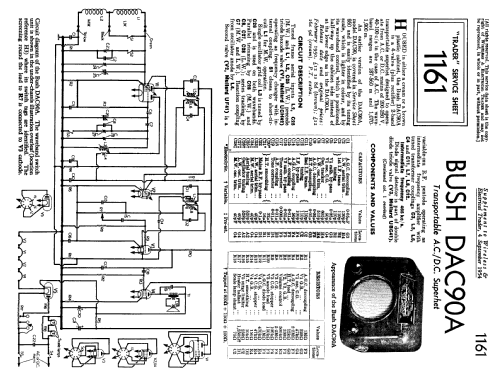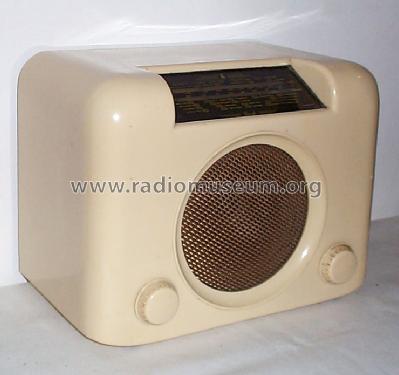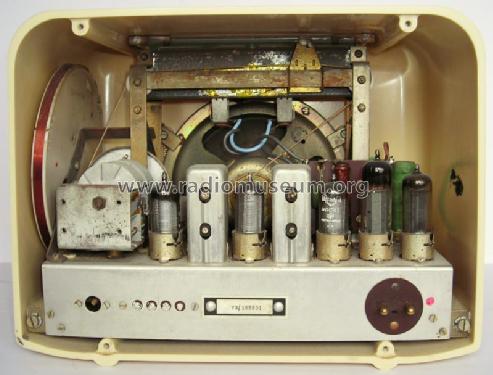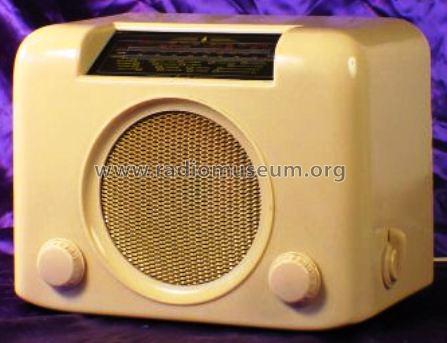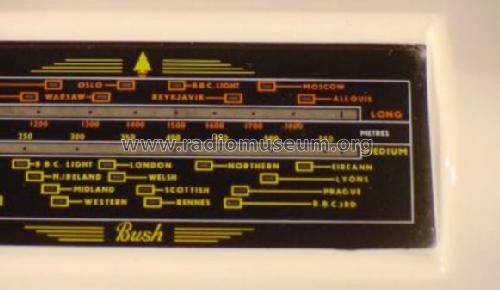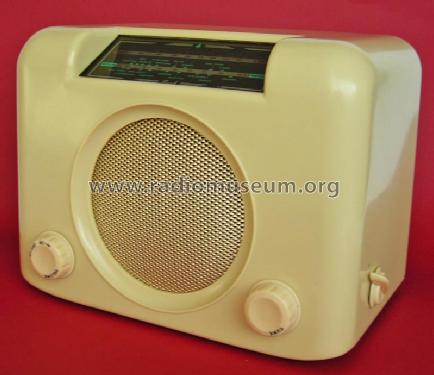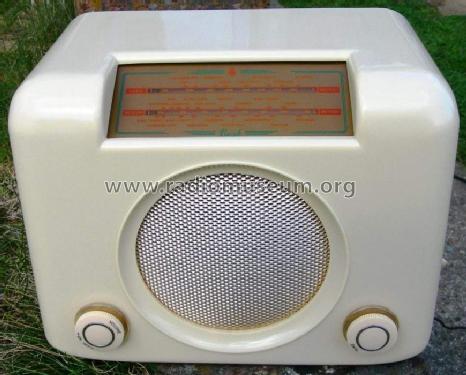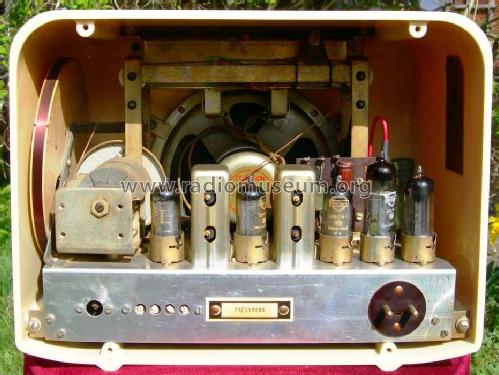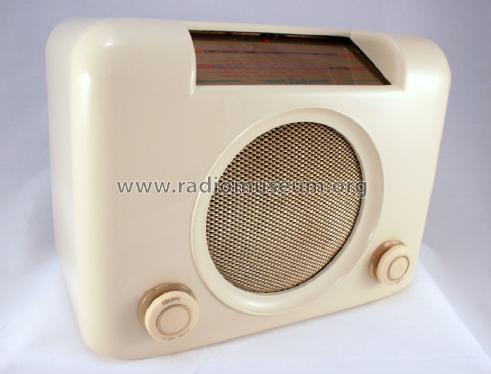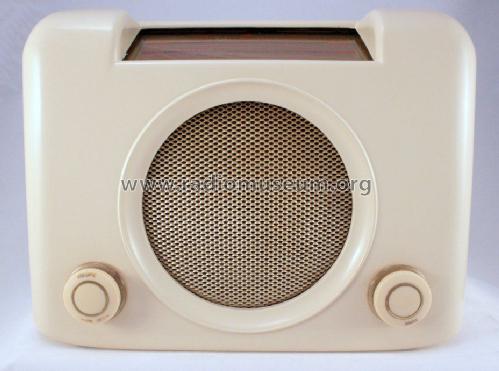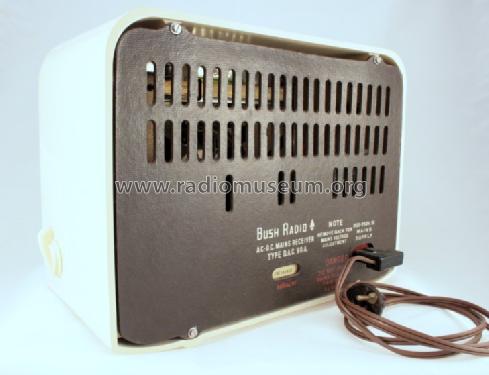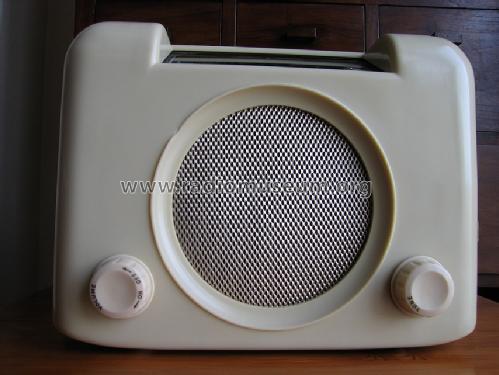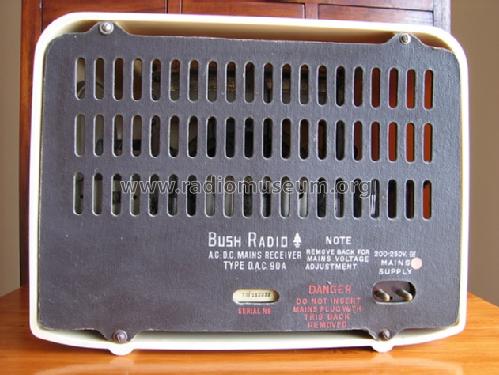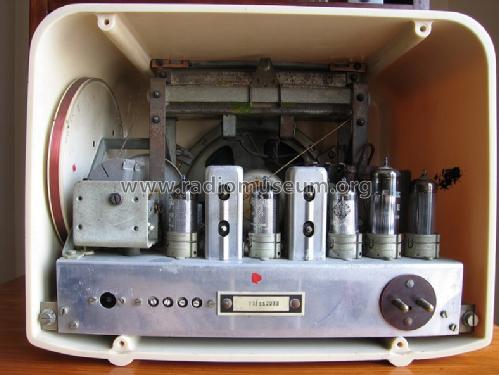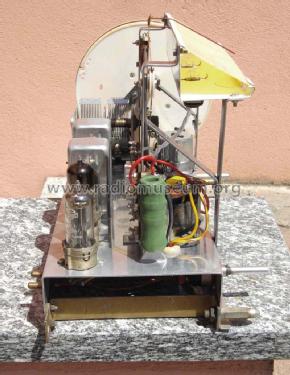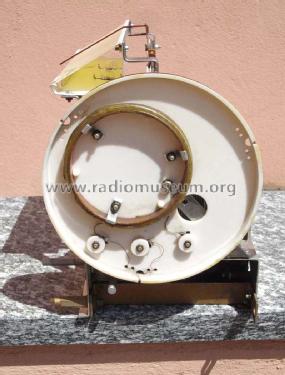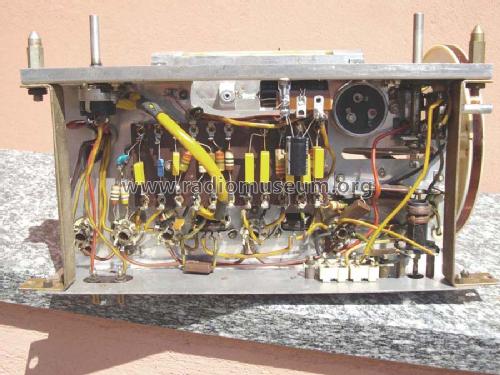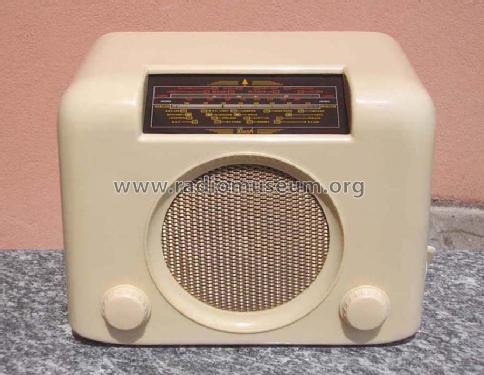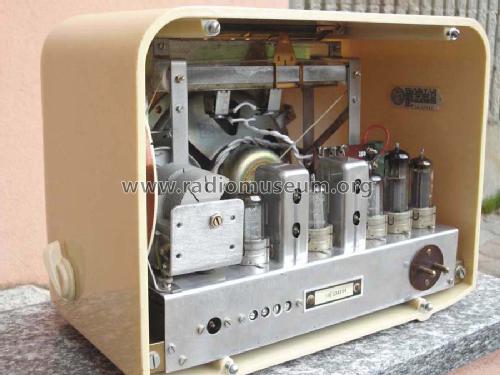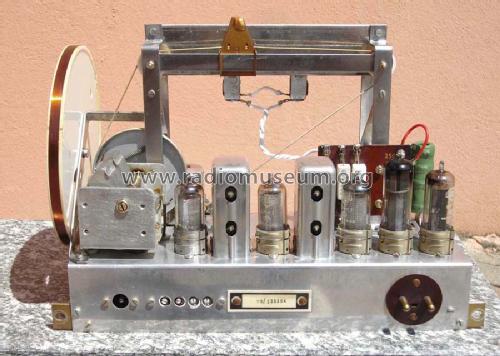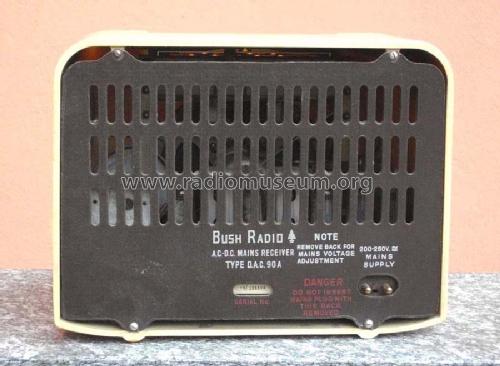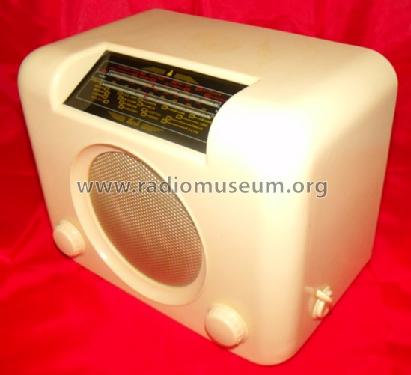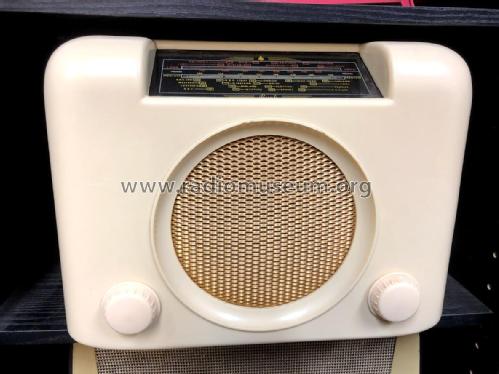DAC90A cream
Bush Radio Ltd.; london
- Pays
- Royaume Uni
- Fabricant / Marque
- Bush Radio Ltd.; london
- Année
- 1950–1959
- Catégorie
- Radio - ou tuner d'après la guerre 1939-45
- Radiomuseum.org ID
- 82157
Cliquez sur la vignette du schéma pour le demander en tant que document gratuit.
- No. de tubes
- 5
- Principe général
- Super hétérodyne (en général); FI/IF 465 kHz; 2 Etage(s) BF
- Circuits accordés
- 6 Circuits MA (AM)
- Gammes d'ondes
- PO et GO
- Tension / type courant
- Appareil tous courants (CA / CC) / 210, 230, 250 Volt
- Haut-parleur
- HP dynamique à aimant permanent + bobine mobile / Ø 6 inch = 15.2 cm
- Puissance de sortie
- 2 W (qualité inconnue)
- Matière
- Bakélite ou plastique de type inconnu
- De Radiomuseum.org
- Modèle: DAC90A [cream] - Bush Radio Ltd.; london
- Forme
- Modèle de table sans poussoirs, modèle cheminée
- Dimensions (LHP)
- 12.75 x 9.25 x 7.6 inch / 324 x 235 x 193 mm
- Remarques
- The best selling valve radio in Great Britain. The radio was also available in a walnut coloured Bakelite cabinet at les cost; later models had an IF/ZF of 470 kHz. The three voltages have to be changed by opening a screw and to put the wire to the other screw. At the back is given 200-250 Volts.
A commonProblemis: Volume doensn´t go to zero on a strong signal if Potentiometer is at the CCW stop. Remedy: a 330 picofarad capacitor between Grid and Kathode of the UBC41. Short leads are important, and perhaps replacement of the big 100k resistor to the grid by a smaller sized one of the same value. See also info below.
- Poids net
- 4.5 kg / 9 lb 14.6 oz (9.912 lb)
- Source
- Radio! Radio!
- Auteur
- Modèle crée par Ernst Erb. Voir les propositions de modification pour les contributeurs supplémentaires.
- D'autres Modèles
-
Vous pourrez trouver sous ce lien 402 modèles d'appareils, 336 avec des images et 239 avec des schémas.
Tous les appareils de Bush Radio Ltd.; london
Collections
Le modèle fait partie des collections des membres suivants.
